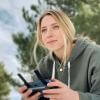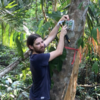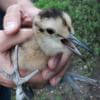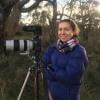Webinar: The Next Generation Of Animal Telemetry
 BOEM
BOEM
1 June 2020 12:00am
Webinar: Virtual Ecosystem Scenario Viewer
 OCTO
OCTO
28 May 2020 12:00am
Competition: 2020 Hackaday Prize
 Conservation X Labs
Conservation X Labs
26 May 2020 12:00am
Intro to new FIT community group - early career interest
25 May 2020 6:00pm
How are you using your Audiomoth?
14 September 2018 10:31am
26 November 2018 10:40am
As well as the points highlighted by Steph, Open Acoustic Devices are also running an online survey to capture the use of AudioMoth. To evaluate the global impact of open-source conservation technology, it is important to know how the technology is being used. This survey will go towards a human-computer interaction study into the usability of tech in conservation, and also used to evaluate the global impact of open-source conservation technology. AudioMoth is being used as a case study to identify best practises for open-source conservation technology development and accessibility.
It would be great to keep sharing your experiences on this thread and if you have time here with our online survey.
22 May 2020 7:32am
How do we get notified for the next group buy?
standards
21 May 2020 9:39pm
Free underwater camera units
10 January 2020 10:06pm
19 May 2020 11:23am
Is this offer still open
Explorer Classroom: Gautam Shah
 National Geographic
National Geographic
19 May 2020 12:00am
Grassroots Innovations for Wildlife Conservation
 Aditya Gangadharan
Aditya Gangadharan
19 May 2020 12:00am
WILDLABS Tech Tutors: Season One
19 May 2020 12:00am
Endangered Species Day Friday 15th May!
14 May 2020 9:04pm
12th International Forum on Illegal, Unreported and Unregulated Fishing
 Chatham House
Chatham House
14 May 2020 12:00am
Ecology/Technology Artist & Freelancer; Hi!
13 May 2020 10:21pm
Invitation to join the FIT community on WildLabs
13 May 2020 5:13pm
Invitation to join the FIT community on WildLabs
13 May 2020 5:09pm
Using UAVs to Assess carbon in Mangroves
13 May 2020 1:06pm
sound loop devise
26 April 2020 1:29pm
12 May 2020 4:07pm
I reckon if you could get down to a power consumption of 2-3Ah per day like our system had then a battery of 20Ah is suitable for a week and you wouldn't need inverters and solar panels etc. I agree that in your environment everything will struggle with being powered for 24hrs. I rarely have that problem to contend with! Will have a look at a temperature test of our design over the Summer and will share the details in a blog if it looks like it will prove a solution for all environments.
12 May 2020 7:14pm
Hi Eric, I think you could do away with an inverter, and instead use something like a DC-DC step-down (sometimes called a 'buck') converter. The solar and battery system is 12VDC correct? Chances are that the MP3 player wall charger is pumping out something like 5VDC (it should be written on the side of the plug)? Something like this would work: https://www.altronics.com.au/p/z6338-dc-dc-converter-module-3.5-35v-input-5-56v-output/
or if it is a 12V battery as I suspect, virtually any 'car' charger for a phone would do (just as I suspect the powerbank will). Hopefully, a large capacity powerbank is enough anyway, and you don't even need solar...
13 May 2020 12:39pm
Yes im hoping the power bank and a few extra mp3s will get it done this year. will look into a better system this winter now that I have some help:)
Webinar: Non-invasive Conservation Genetics
 Imogene Cancellare
Imogene Cancellare
13 May 2020 12:00am
Creating the Wildeverse
13 May 2020 12:00am
Audiograms- the range species can hear at
11 March 2020 11:50am
19 April 2020 8:07pm
I'm a primatologist so can't say too much about other mammal taxa, but I believe this is the most comprehensive resource for primate audiograms--
Coleman, M. N. (2009). What do primates hear? A meta-analysis of all known nonhuman primate behavioral audiograms. International Journal of Primatology, 30(1), 55-91.
7 May 2020 9:47am
Hi Isla,
Range at which animals hear sounds depend on 4 things:
1) the frequency (pitch) of the sound of interest. As a rule of thumb, lower frequency sounds travel farther since high frequency sounds are subject to more absorption transmission losses.
2) the medium in which the sound is being transmitted in (i.e. sound travels at ~1500m/s in seawater and ~340m/s in air).
3) the audiogram of the animal (i.e. what frequencies CAN they hear), which Carly is referring to in the previous comment.
There has been a lot of audiogram research on marine mammals. Find an overview and links to a handful of publications here: https://dosits.org/animals/effects-of-sound/measure-marine-mammals-reaction-to-sound/hearing-sensitivity-studies/ . This has also recently been explored in diving seabirds from SDU (university of southern denmark).
and
4) the noise levels in the environment, as sounds can only be distinguished if they have some decent signal-to-noise ratio.
If you have any specific more questions, get in touch.
Cheers,
Chloe
Any here used Cornell's Swift Recorder?
13 April 2020 4:33am
28 April 2020 4:51pm
Hi Daniella,
Yes, I have used SWIFT, SongMeter SM4, and Audiomoths. I find Swift to be the most energy efficient. They are also very affordable. Currently, they are my number one choice. In reality, however, I would say that whether you use Swift over other sensors, particularly Audiomoths, would depend on the type of study you want to do and how often you can get to the sensors to replace batteries. Happy to talk about cons and pros if you want. Just send me an email here: [email protected].
Cheers,
David
6 May 2020 8:13am
Hello Daniella,
We, WCS Mongolia, used lithium batteries for SWIFT recorders, the most of them still working in until now, since the last August.
At the Cornell SAW, they said alkanium battery will be working 27-44 days, and it depends on configuration sample rate.
We are configured 8K for sampling rate, and 24 hours recording.
Thanks,
Ochiroo
6 May 2020 8:22am
We used the following lithium batteries.
URL:
https://fortebattery.en.made-in-china.com/product/FBDEubqyfGhH/China-C-Size-Lithium-Batteries-Cr26500-Cr26500se-Er26500-Er26500m.html
Get To Know FIT
6 May 2020 12:00am
Era of the Condor: A Species' Future in Recovery
 Ellie Warren
Ellie Warren
5 May 2020 12:00am
Notification systems for trap activation
10 January 2019 5:30am
4 May 2020 2:05am
Hi Rahid,
Thanks for your reply. In answer to your questions:
#1
There would be no external power (or cell phone reception) available at any of the node? The nodes would need to be completely autonomous.
#2
Total number of nodes would likley be in the range of 100–200 within a project area.
#3
The maximum distance between two nodes would likely be 5 km.
#4
All i want to transmit is an alert to say whether a trap has been activated or not. No video is required.
Many thanks,
Andrew
4 May 2020 3:00am
Ok, we can customize a solution for you, but probably won't be able to get this out to you for around 3-4 months.
RF and mesh is our domain. We can guarantee NLOS at well over 20 km+.
5KM in not a large distance. Not sure if LoRa can handle 200 nodes or work in the bush --- trees are the enemy of anything above 300 MHz.
I'm all for using HF (below 30MHz) or tactical VHF (30-108 MHz).
Would 1-1.6m antennas work?
---
I can email you a case study for a much more complex project that we did last December .
We were able to transmit video using 100KHz of bandwidth over a frequency of 30.5 MHz. Our moving car was traveling at 130 km/h and achieved a 64km+ distance from the base station --- we used 50% less bandwidth to transmit video than what an FM radio station uses to transmit tunes and other meta data. Our glass to glass (camera lense to monitor) latency was 24ms.
---
Our solutions don't require an expensive sattelite link or any phone network to work (although we can add those options).
What this means is that our radios will always work, come rain, come snow, et al. --- Satellite links are easily disrupted by a low cast / clouds , etc.
Our signals reflect and refract of the ground and the ionosphere to give you NLOS in any condition.
So a sensor based project of 200 nodes is no problem at all.
---
If waiting 3-4 months is not a big deal, then we can donate a few units to your project once we learn more about it.
---
4 May 2020 5:01am
Please see my edits above
Competition: iWildCam 2020
 CVPR
CVPR
4 May 2020 12:00am
Mesh Powered Software Defined Radios
2 May 2020 7:13am
Training Course: Quantitative Analysis of Marine & Coastal Drone Data
 Duke Marine Lab
Duke Marine Lab
29 April 2020 12:00am
Guidelines or Protocols for Camera Trapping Monitoring of Eurasian Otters?
20 April 2020 10:55am
28 April 2020 3:05pm
Hi Naomi,
I'm not aware of any guidelines published, but we've got the smooth coated otter in our camera traps before, and I suggest you follow a stratified sampling approach. You can stratify habitats along streams and flowing water bodies and place camera traps along stream banks especially where there are reed beds etc.
WILDLABS Community Survey Input: Ideas for 2020?
24 April 2020 4:29am
Call for Submissions – Arm Research Summit 2020
 Arm
Arm
24 April 2020 12:00am


















25 September 2018 8:08pm
I'm in North Somerset UK and have two AudioMoths. I've adapted some waterproof cases which also can be locked and strapped onto a tree etc using a python cable. This allow me to use them safely in semi-public spaces. My interst is surveying for bats and recording them with the land owners. I got interested in having a recorder, when helping to trap for nathusius' pipistrelle on a site I've know for 10 years - and just because I was out later than I normally survey we found not only nathusius' pipistrelle but a passing Lesser Horseshoe on my Petterson M500usb - so I decided to get some AudioMoths and play!
My Website is here